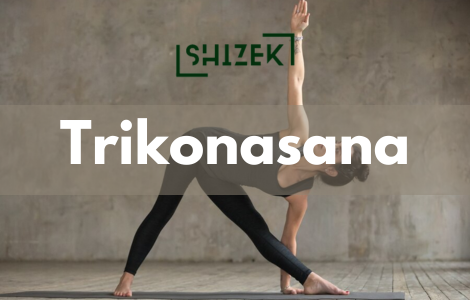10 Benefits of Pranayama

Namaste!
Pranayama is a Sanskrit word that means “extension of the breath.” It is a practice of controlling the breath, which is an essential part of yoga. Pranayama involves various techniques that help in regulating the breathing process. It is believed that pranayama can help in achieving a balance between the mind and body, which can ultimately lead to a healthier and happier life. In this article, we will explore the top 10 Benefits of Pranayama and how it can help you live a healthier and happier life.
Steps to Do Pranayama
- Find a quiet and comfortable place to practice, free from distractions.
- Sit in a comfortable seated position, such as Sukhasana (Easy Pose) or Padmasana (Lotus Pose), with a straight spine.
- Gently close your eyes and bring your awareness to your natural breathing pattern.
- Inhale deeply through your nostrils, allowing your abdomen to expand.
- Exhale slowly and completely, contracting your abdominal muscles.
- Once you’ve established a steady rhythm, you can begin practicing specific pranayama techniques, such as Nadi Shodhana (Alternate Nostril Breathing), Kapalabhati (Skull Shining Breath), or Anuloma Viloma (Alternate Nostril Breathing with Retention).
Tips and Tricks to Perform Pranayama
- Always practice pranayama on an empty stomach or at least 2-3 hours after a meal.
- Maintain a gentle and relaxed attitude throughout the practice, without forcing or straining.
- Coordinate your breath with gentle movements of the abdomen and chest.
- Start with shorter durations and gradually increase the length of your practice as you become more comfortable.
- Practice consistently, ideally in the morning or evening, or both, for optimal benefits.
- Incorporate pranayama into your daily routine for long-term effects.
Things/Health Conditions to Keep in Mind While Performing Pranayama
- If you have any respiratory conditions, such as asthma or chronic obstructive pulmonary disease (COPD), consult with your healthcare provider before practicing pranayama.
- Individuals with high blood pressure or heart conditions should approach pranayama cautiously and avoid breath retention techniques.
- Pregnant women should avoid practicing pranayama techniques that involve breath retention or forceful breathing.
- If you experience dizziness, lightheadedness, or discomfort during pranayama, stop immediately and return to normal breathing.
- Individuals with neck or back injuries should be mindful of their posture and modify positions as needed.
Now, let’s explore the 10 remarkable benefits of pranayama in detail.
Benefits of Pranayama
- Improved Respiratory Function: Pranayama exercises the respiratory muscles, improving lung capacity, oxygen uptake, and overall breathing efficiency.
- Stress and Anxiety Relief: The rhythmic breathing patterns and mind-body connection cultivated through pranayama help calm the mind, reduce stress hormones, and promote a sense of relaxation and tranquility.
- Enhanced Concentration and Mental Clarity: Pranayama improves focus and concentration by training the mind to be present and centered. It can also enhance cognitive functions and memory.
- Emotional Balance: Pranayama regulates the flow of prana (life force energy) and helps balance the emotions, promoting a sense of emotional stability and well-being.
- Strengthened Immune System: Pranayama enhances the body’s ability to oxygenate the blood, which in turn supports the immune system’s function and overall vitality.
- Blood Pressure and Heart Rate Regulation: Certain pranayama techniques can help lower high blood pressure and regulate heart rate, promoting cardiovascular health.
- Improved Digestion and Metabolism: Pranayama stimulates the abdominal muscles and massages internal organs, aiding digestion and metabolism.
- Detoxification: The deep breathing patterns in pranayama facilitate the removal of toxins and metabolic waste from the body, promoting overall health and well-being.
- Increased Energy Levels: Pranayama improves the body’s ability to utilize oxygen efficiently, leading to increased energy levels and reduced fatigue.
- Spiritual Growth: Pranayama is considered a powerful tool for self-realization and spiritual growth, as it helps cultivate awareness, mindfulness, and a deeper connection with the present moment.
Conclusion
Pranayama is a simple yet powerful tool that can help you achieve greater health and happiness. By practicing pranayama regularly, you can improve lung function, reduce stress, and enhance your overall well-being.
So why not give it a try and experience the benefits of this ancient yogic practice for yourself?
Namaste!
Must Check Our Other Blogs on Yoga & Fitness
























































































































